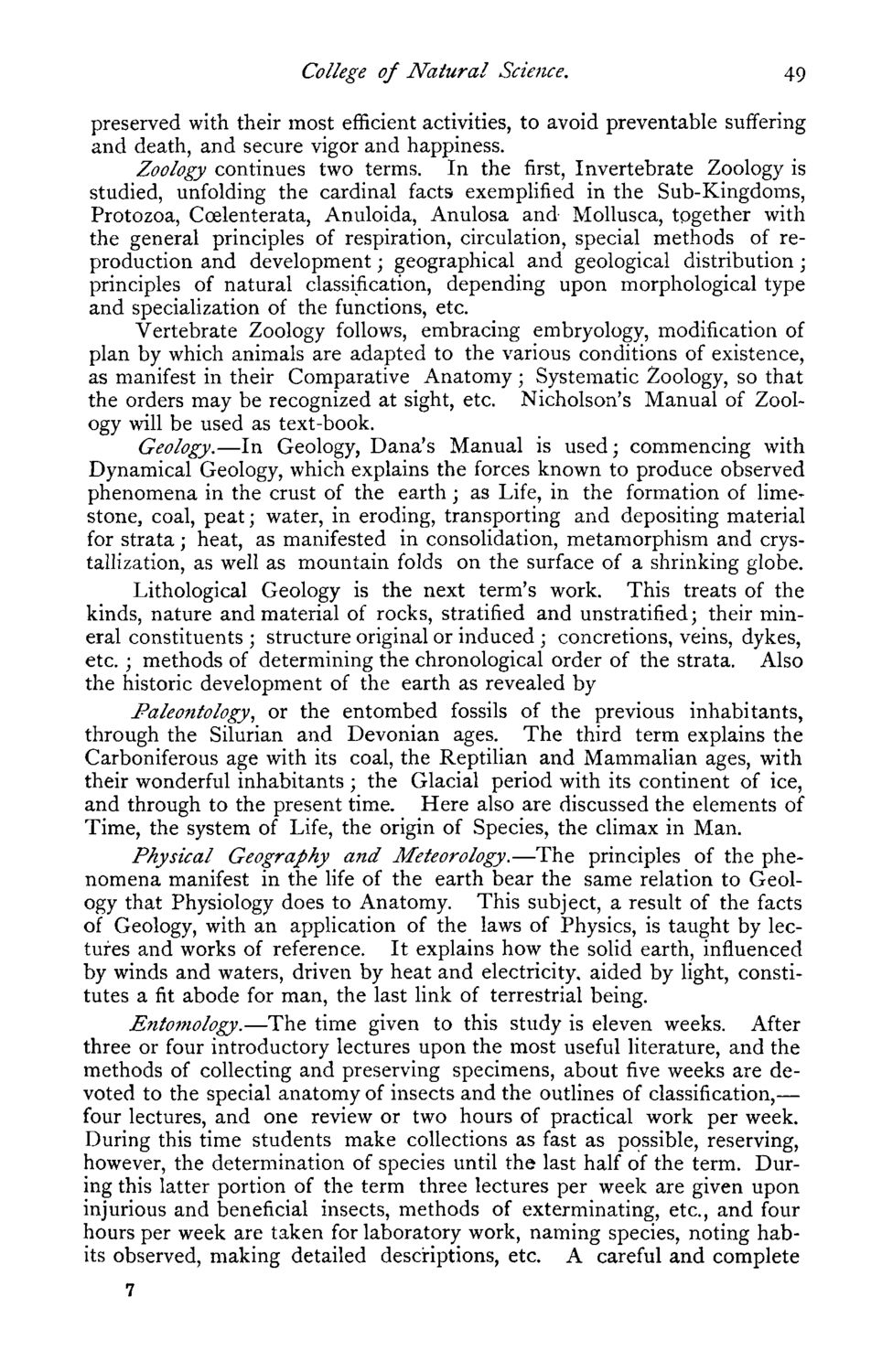| |
| |
Caption: Course Catalog - 1877-1878 Version A
This is a reduced-resolution page image for fast online browsing.

EXTRACTED TEXT FROM PAGE:
College of Natural Science. 49 preserved with their most efficient activities, to avoid preventable suffering and death, and secure vigor and happiness. Zoology continues two terms. In the first, Invertebrate Zoology is studied, unfolding the cardinal facts exemplified in the Sub-Kingdoms, Protozoa, Ccelenterata, Anuloida, Anulosa and Mollusca, together with the general principles of respiration, circulation, special methods of reproduction and development; geographical and geological distribution; principles of natural classification, depending upon morphological type and specialization of the functions, etc. Vertebrate Zoology follows, embracing embryology, modification of plan by which animals are adapted to the various conditions of existence, as manifest in their Comparative Anatomy ; Systematic Zoology, so that the orders may be recognized at sight, etc. Nicholson's Manual of Zoology will be used as text-book. Geology.—In Geology, Dana's Manual is used; commencing with Dynamical Geology, which explains the forces known to produce observed phenomena in the crust of the earth ; as Life, in the formation of limestone, coal, peat; water, in eroding, transporting and depositing material for strata; heat, as manifested in consolidation, metamorphism and crystallization, as well as mountain folds on the surface of a shrinking globe. Lithological Geology is the next term's work. This treats of the kinds, nature and material of rocks, stratified and unstratified; their mineral constituents ; structure original or induced ; concretions, veins, dykes, etc. ; methods of determining the chronological order of the strata. Also the historic development of the earth as revealed by Paleontology, or the entombed fossils of the previous inhabitants, through the Silurian and Devonian ages. The third term explains the Carboniferous age with its coal, the Reptilian and Mammalian ages, with their wonderful inhabitants ; the Glacial period with its continent of ice, and through to the present time. Here also are discussed the elements of Time, the system of Life, the origin of Species, the climax in Man. Physical Geography and Meteorology.—The principles of the phenomena manifest in the life of the earth bear the same relation to Geology that Physiology does to Anatomy. This subject, a result of the facts of Geology, with an application of the laws of Physics, is taught by lectures and works of reference. It explains how the solid earth, influenced by winds and waters, driven by heat and electricity, aided by light, constitutes a fit abode for man, the last link of terrestrial being. Entomology.—The time given to this study is eleven weeks. After three or four introductory lectures upon the most useful literature, and the methods of collecting and preserving specimens, about five weeks are devoted to the special anatomy of insects and the outlines of classification,— four lectures, and one review or two hours of practical work per week. During this time students make collections as fast as possible, reserving, however, the determination of species until the last half of the term. During this latter portion of the term three lectures per week are given upon injurious and beneficial insects, methods of exterminating, etc., and four hours per week are taken for laboratory work, naming species, noting habits observed, making detailed descriptions, etc. A careful and complete
| |